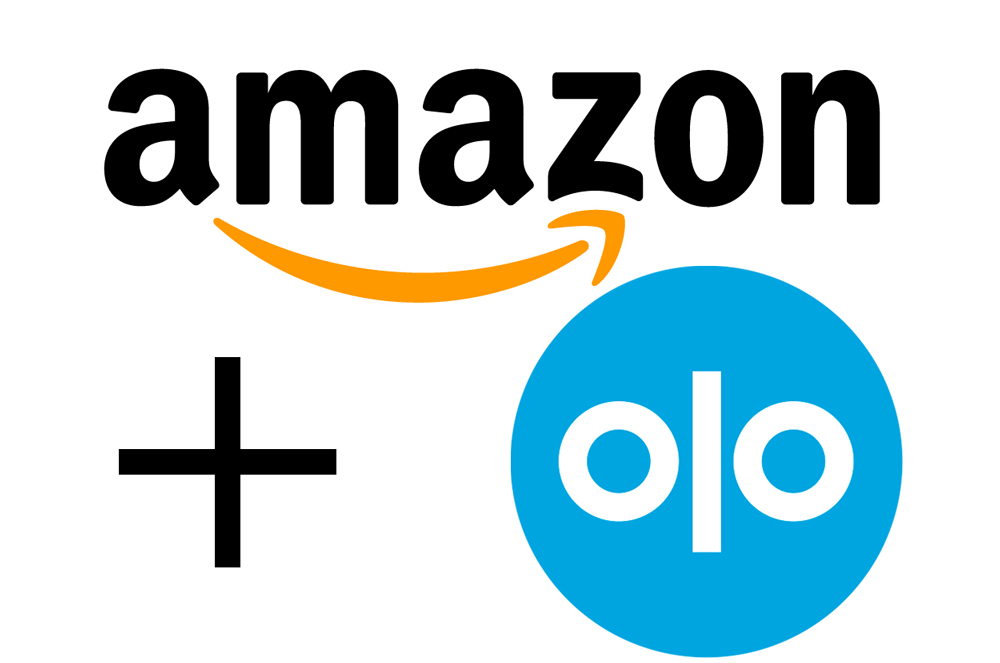By Nick Upton
The legion of white Amazon vans roving through your city will be carrying more restaurant deliveries after penning a deal with delivery logistics provider Olo.
In the new deal, Amazon has partnered with Olo, integrating with Rails, Olo’s API that makes it easy for restaurants to list their menus on third-party marketplaces like Amazon Restaurant. Now, instead of kicking orders from the Prime portal to yet another tablet on the counter, it flows directly into the restaurant point-of-sale system—as long as the restaurant is an Olo partner.
“I’m pretty psyched about it,” said Olo founder and CEO Noah Glass. “This is making it easier for restaurants that we work with to add a new delivery sales channel through Amazon Restaurants.”
It’s an ideal place to be for consumers browsing their Amazon wish list from the couch, he added.
“I think what’s interesting, Amazon Restaurants is a service, it’s not an app in and of itself and it’s part of Amazon itself… It expands a new perception of instant gratification. That’s an amazing value proposition for the consumer, especially those with the on-demand mindset,” said Glass. “That truly is an incremental order and that’s really exciting for the restaurants.”
The economics of using Amazon Restaurants stays the same for restaurants who partnered with the ecommerce giant. Generally, the service takes about a 30-percent cut for orders coming through Amazon Restaurants. But with the Olo integration, partner restaurants can shed a bit of labor that was re-keying orders and watching the tablets.
For Olo restaurants, it makes easier to tap into the cult of Amazon, which has seen some criticism around restaurant selection. The Prime club is a good one to be in front of since they exhibit high loyalty and higher purchase rates than standard Amazon users, according to a survey by RBC Capital.
Glass said it’s also another demonstration that third-party delivery, while there are some hurdles, isn’t some fad. But news like this means FOMO for brands that aren’t in the mix already.
“It’s a fear of missing out, people see this $150 billion shift toward digital and if you’re in a $800 Billion industry, that’s nearly 20 percent of industry sales—you want to be on the right side of that shift,” said Glass. “A lot of restaurant brands are trying to convince themselves that this is a fad, but I don’t think it is. It’s a shift toward convenience.”
Unlike many of Amazon’s recent forays into the restaurant space, from its purchase of Whole Foods to drones and grab-and-go convenience stores, this new move streamlines things for restaurants, but it does have a few implications for the on-demand industry. Grubhub, for one, took a stock hit on the news. It since returned to new highs, but it’s yet another thing that makes industry investors nervous about Amazon taking over everything.
According to Thomas Champion at Cowen, it means three things:
“In our view, 1) the move suggests that Amazon remains committed to the restaurant delivery business, and 2) could speed expansion of the restaurant network going forward, particularly chains who we see as the primary Rails user,” wrote Champion in a research note. “Also, 3) some investors we spoke with expressed concerns related to pricing (although we have not observed aggressive pricing in Delivery thus far, indeed press reports place Amazon’s take rate at close to 30%).”
He is, however, unconcerned.
“While we acknowledge the risk of Amazon encroachment, our view of delivery doesn’t change post the announcement. It remains an expansive $40 billion-plus market in the U.S., with solid growth characteristics,” wrote Champion.


